
About Andrew Cusack
 Writer, web designer, etc.; born in New York; educated in Argentina, Scotland, and South Africa; now based in London.
Writer, web designer, etc.; born in New York; educated in Argentina, Scotland, and South Africa; now based in London. read more
News
Blogs
Reviews & Periodicals
Arts & Design
World
France
Mitteleuropa
Knickerbockers
Argentina
The Levant
Africa
Cape of Good Hope
Netherlands
Scandinavia
Québec
India
Muscovy
Germany
Academica
St. Zita?
Church Opens Investigation into Sanctity of Zita of Bourbon-Parma, Wife of Blessed Charles and Last Empress of Austria-Hungary
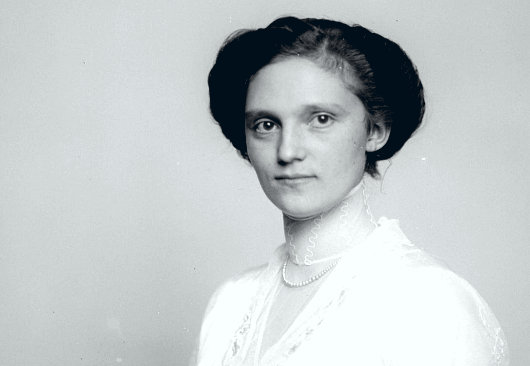
It was announced recently that Mgr. Yves Le Saux, Bishop of Le Mans in the traditional province of Maine (Pays de la Loire), France has opened the cause for the beatification of Zita of Bourbon-Parma, the long-lived wife of Blessed Emperor Charles of Austria. Charles, the last (to date) Emperor of Austria, Apostolic King of Hungary, and King of Bohemia (&c.), died in exile in Madiera in 1922, aged just thirty-four years. Zita Maria delle Grazie Adelgonda Micaela Raffaela Gabriella Giuseppina Antonia Luisa Agnese de Bourbon-Parma, meanwhile, was born in Tuscany in 1892 and lived a long life, giving up the ghost in March 1989, and interred in the Capuchin vault in Vienna following a funeral of imperial dignity.
“The process was opened in Le Mans,” Gregor Kollmorgen of TNLM reports, “and not in the Swiss diocese of Chur, where the Empress died twenty years ago in 1989 in Zizers, with the consent of Msgr. Huonder, the Bishop of Chur, and the permission of the Congregation for the Causes of the Saints, because within the diocese of Le Mans is situated the Abbey of Solesmes, well known to NLM readers for its leading rôle in the early liturgical movement in the nineteenth century, especially regarding Gregorian chant, and which was the spiritual center of the Servant of God Zita, her home among her many exiles.”
Zita’s relationship with Solesmes dates back to 1909 when she first visited its sister-abbey of St. Cecilia on the Isle of Wight in England. She became an oblate of the Abbey of Solesmes itself in 1926. Her daily life after the exile & death of her saintly husband included the Rosary, hearing multiple daily masses, and praying part of the Divine Office.
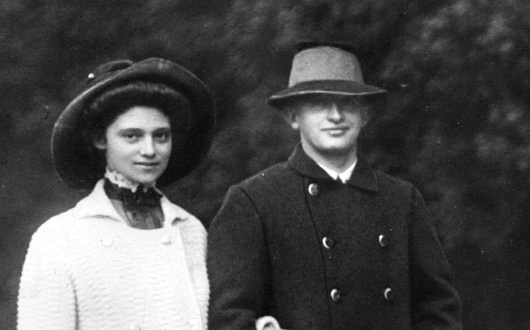
Zita was the daughter of the deposed Duke of Parma, Robert I, during his second marriage to Maria Antonia of Portugal. The Duke’s first wife, Maria Pia of the Two Sicilies, died in 1882, and Zita was the seventeenths of the Duke’s twenty-four children by his two wives. Three of Zita’s sisters became nuns, a vocation which she explored, but in 1909 she became reacquainted with her childhood friend Archduke Charles of Austria. In June 1911, they were engaged and then married at the castle of Schwarzau that October.
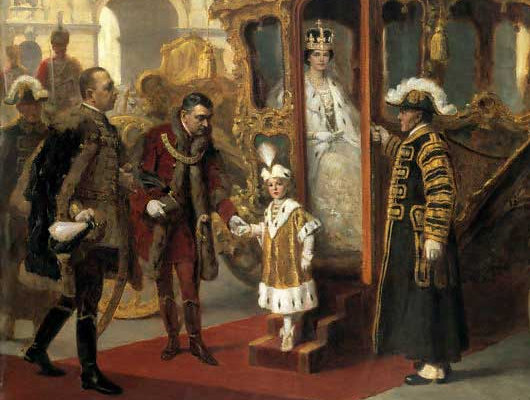
After the horrendous Sarajevo Assassination of 1914, Charles became heir to the Austro-Hungarian throne, and the empire was thrown into the catastrophic First World War. When the Emperor Franz Joseph died in November 1916, Charles succeeded to the imperial throne. Zita accompanied their son & heir Otto to the coronation of her husband in Budapest.
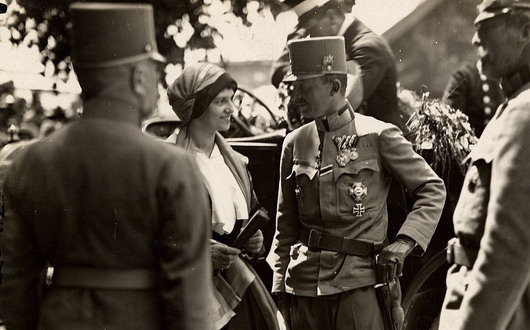
First as Archduchess and then as Empress, Zita proved a suitable match for Charles, happy to don the national costume of the many nations over which the Hapsburg empire spread its vast and benevolent dominion when the occasion arose.
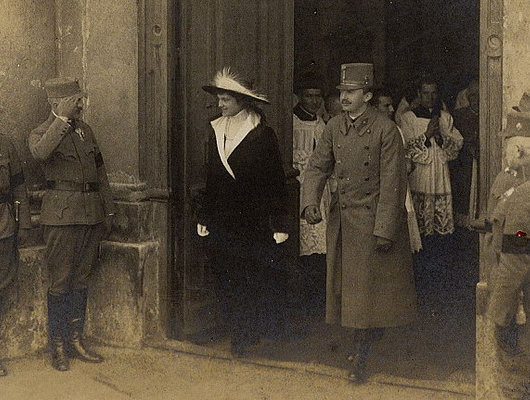
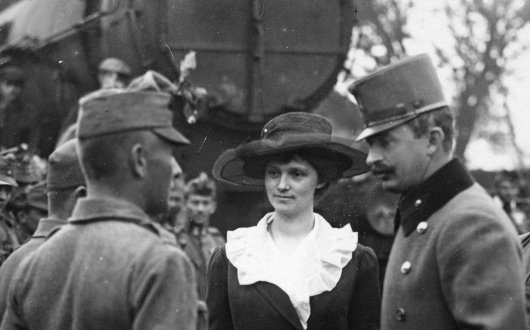
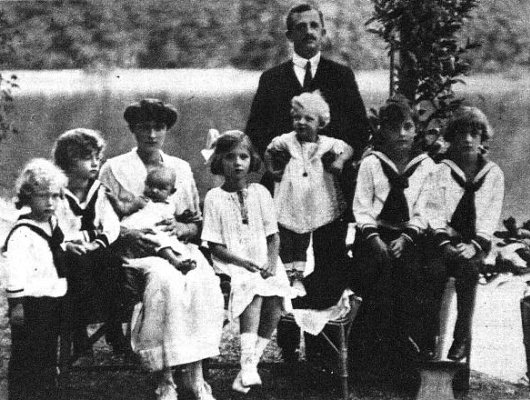
In November 1918, the Austro-Hungarian Empire collapsed, and the Hapsburgs were forced to flee Austria in the March of the following year. The family were first exiled to Switzerland, but after two nearly successful attempts to regain his Hungarian throne, the Swiss revoked his residency privilege and the allied powers transferred him to the Portuguese island of Madeira, where he died in 1922. Zita and the children moved to Spain shortly after the death of the Emperor, and then to Belgium in 1929 as Crown Prince Otto prepared to begin his studies at Leuven, the oldest remaining Catholic university in the world. Friendly overtures by the Austrian Chancellor Dollfuß and, following his murder by Nazis, Chancellor Schuschnigg came to nought when Austria was annexed by Nazi Germany in 1938.
As Catholics, the Hapsburgs were opposed to everything Hitler stood for, and as former monarchs Hitler considered them potential rivals. When he invaded Belgium in 1940, Zita took the family through France and Spain to Portugal, where the United States government granted them entry visas. After sailing into New York, they spent varying periods of time around the metropolitan region. As the children’s English was paltry at best, they (being Francophones) eventually made their way to Quebec. In the province’s capital, arguably the most European of North America’s cities, they were so poor that the children resorted to collection dandelions from the public parks to boil into an almost tasteless soup. (I reflected up this point when I, on my visit to the grave of the holy Gen. Georges Vanier in that city, I came across the frozen remnants of a dandelion in the snow).
In 1952, however, the Empress Zita returned to Europe, first to Luxembourg before finally making her final home in the Swiss canton of Graubünden. In 1989, at ninety-six years of age, the Empress Zita died. The Austrian Republic allowed her funeral to be held in Vienna, and the former imperial capital witnessed the finest Hapsburg spectacle since the funeral of the Emperor Franz Joseph in 1916.
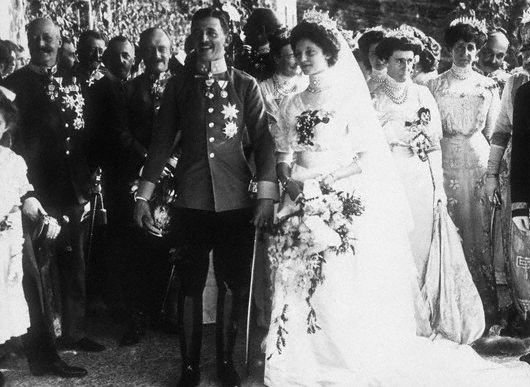
In many ways Zita’s cause is not a surprise. When Charles of Austria was beatified, October 21 — not his death day but the anniversary of his marriage to Zita (photo above) — was chosen as his feast day, which suggested the possibility that this married couple might some day be jointly praised on the altars of Christendom. The following is the official prayer to invoke the intercession of Empress Zita:
We ask you that your servant Zita, Empress and Queen, will be raised upon the altars of your Church. In her, you have given us a great example of faith and hope in the face of trials, and of unshakeable trust in your Divine Providence.
We beseech you that alongside her husband, the Blessed Emperor Charles, Zita will become for couples a model of married love and fidelity, and for families a guide in the ways of a truly Christian upbringing. May she who in all circumstances opened her heart to the needs of others, especially the poor and needy, be for us all an example of service and love of neighbour.
Through her intercession, grant our petition (mention here the graces you are asking for). Through Christ our Lord. Amen.
Any graces received through the intercession of the Servant of God, Empress Zita — especially those which are possibly miraculous — should contact:
Abbaye Saint-Pierre
1, place Dom Guéranger
72300 Solesmes, France
More: Charles of Austria
Search
Instagram: @andcusack
Click here for my Instagram photos.Most Recent Posts
- Waarburg October 2, 2024
- A Prize for the General September 23, 2024
- Articles of Note: 17 September 2024 September 17, 2024
- Equality September 16, 2024
- Rough Notes of Kinderhook September 13, 2024
Most Recent Comments
Book Wishlist
Monthly Archives
Categories



Deeply satisfying news.
Two remarks: you and your readers should go to youtube and type in “King Charles IV”. The first clip to come up shows actual footage of the scene you depict at the beginning of this article. Words cannot express the reality of what is on view: go, gaze, weep for what was taken from us.
I spent a week at Solesmes in 1975. One day a visitor was waiting in the middle of the refectory for the arrival of the abbot. A tiny man of great age, he was dressed in the stye of the Twenties and held a pair of gloves in his palsied hands (I watched mesmerized as they shook). The Abbot walked up to him and lead him to the high table , where he sat in the place of honour. This was Francois Xavier de Bourbon-Parme, Zita’s brother, and the man who, with his brother Sixte, joined Karl in attempting to end the insane slaughter of the Great War. They failed, but can never be praised enough for their attempt.
It is no accident that it was the most “reactionary” forces in Europe which were the first to see the ruinous nature of that terrible conflict, any more than that it was the most “progressive” which sought to prolong it.
I, too, am delighted to hear that Zita’s cause has been taken up. I will also pray that your remark about Charles being the last Habsburg Emperor – “to date” – will come to pass in an effort to promote peace and harmony!
Just to add some colour to what v Hetterscheidt is saying, Xavier de Bourbon-Parme was named regent to the throne of Spain by Alfonso Carlos I, the last (so far) of the carlist kings. He (Xavier) spent sometime in various nazi concentration camps, including Dachau.
It is great news to hear about the beatification of Empress Zita.
I did as “Baron v Hetterscheidt” suggests, and it is indeed heartbreaking to be reminded of what was taken from us. While this is perhaps not the most profound reason to be a monarchist, I am particularly bitter about the fact that most of Europe’s ancient monarchies were never allowed to coexist with modern technologies that could have made their splendid pageantry accessible to all. How grand it would be to be able to watch the coronation of a King of France on television, or visit the official website of the reigning Habsburg emperor!
Andrew, you say that “as Catholics, the Habsburgs opposed Hitler”, but isn’t it a sad fact that many Austrian Catholics actually supported the regime?
I’ve always thought that if the Habsburg had still been in power at the time, Austria would have been saved from that degradation.
I was told that Dennis Mifsud – Delegate of the Emperor Karl League of Prayers for Malta, has just published a good biography of Blessed Empror Karl I of Austria. Delegate Dennis Mifsud can be contacted on e-mail address; beatukarlumalta@yahoo.com
Today is the Liturgical Memorial of Emperor Karl I of Austria and the 99th wedding anniversary. We hope that he will be canonized soon. Emperor Karl I pray for us and protect Europe.
Dennis Mifsud S.Th.Dip. – Maltese Delegate of the Emperor Karl League of Prayers for Peace among Nations, has just published a good biography of Emperor Karl I of Austria. His book includes unedited photos and the Novena in honour of Emperor Karl I. Delegate Dennis Mifsud can be contacted on e-mail address; beatukarlumalta@yahoo.com
I amvery happy that the Emperor Karl League of Prayers for Peace among Nations is now officially erected in Malta and Gozo. Theology student Dennis Mifsud is the Delegate and Promoter of the Canonization Cause of Emperor Karl of Austria.Last year he published a book on Karl I in english and this year he published another book in maltese on Emperor Karl in order to commemorate the 1st centenary of the royal marriage of Karl and Zita, and also to commemorate the erection of the League of Emperor Karl in Malta. Any maltese wishing to join the League should contact the Delegate on E- mail address
beatukarlumalta@yahoo.com
The Association for the Beatification of Empress Zita is now established in Malta.You can visit their Facebook page; http://www.facebook.com/EmpressZitaMalta